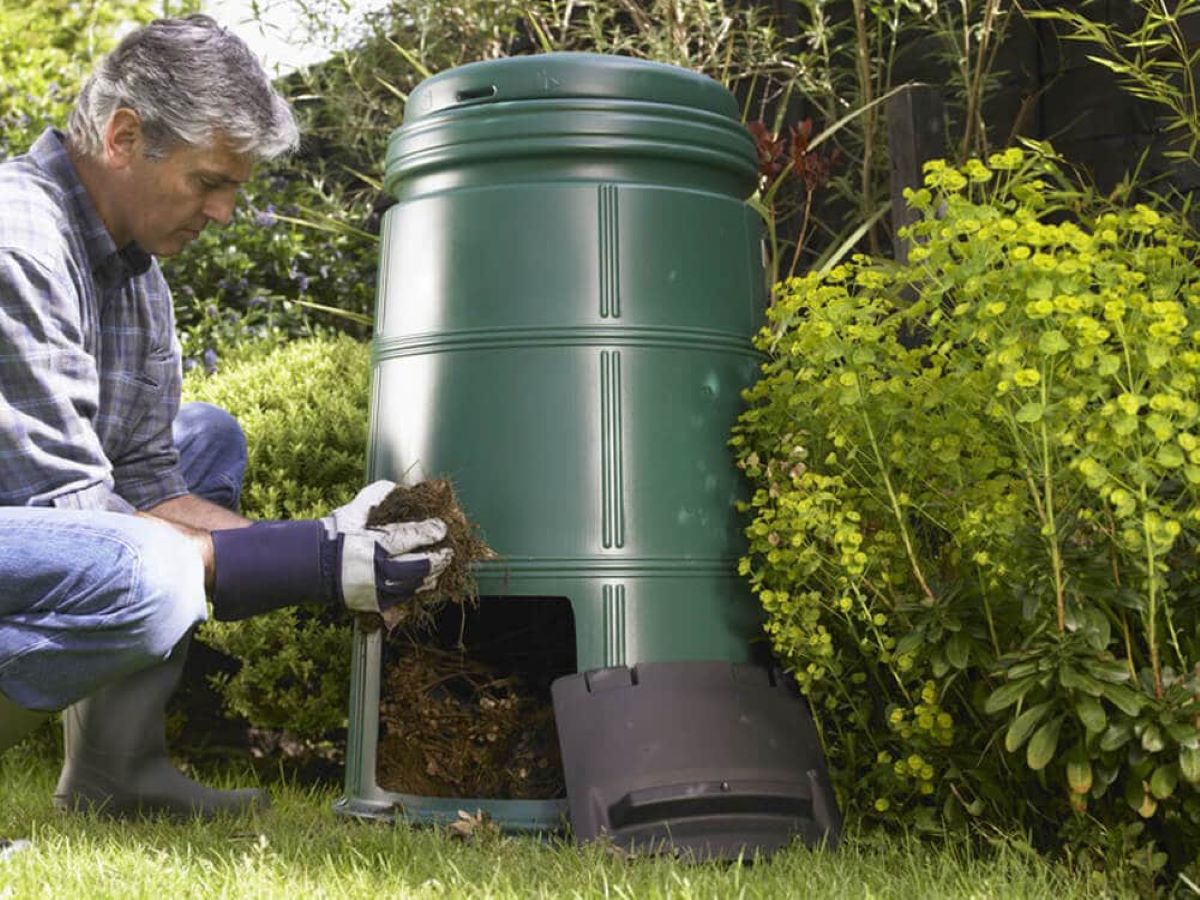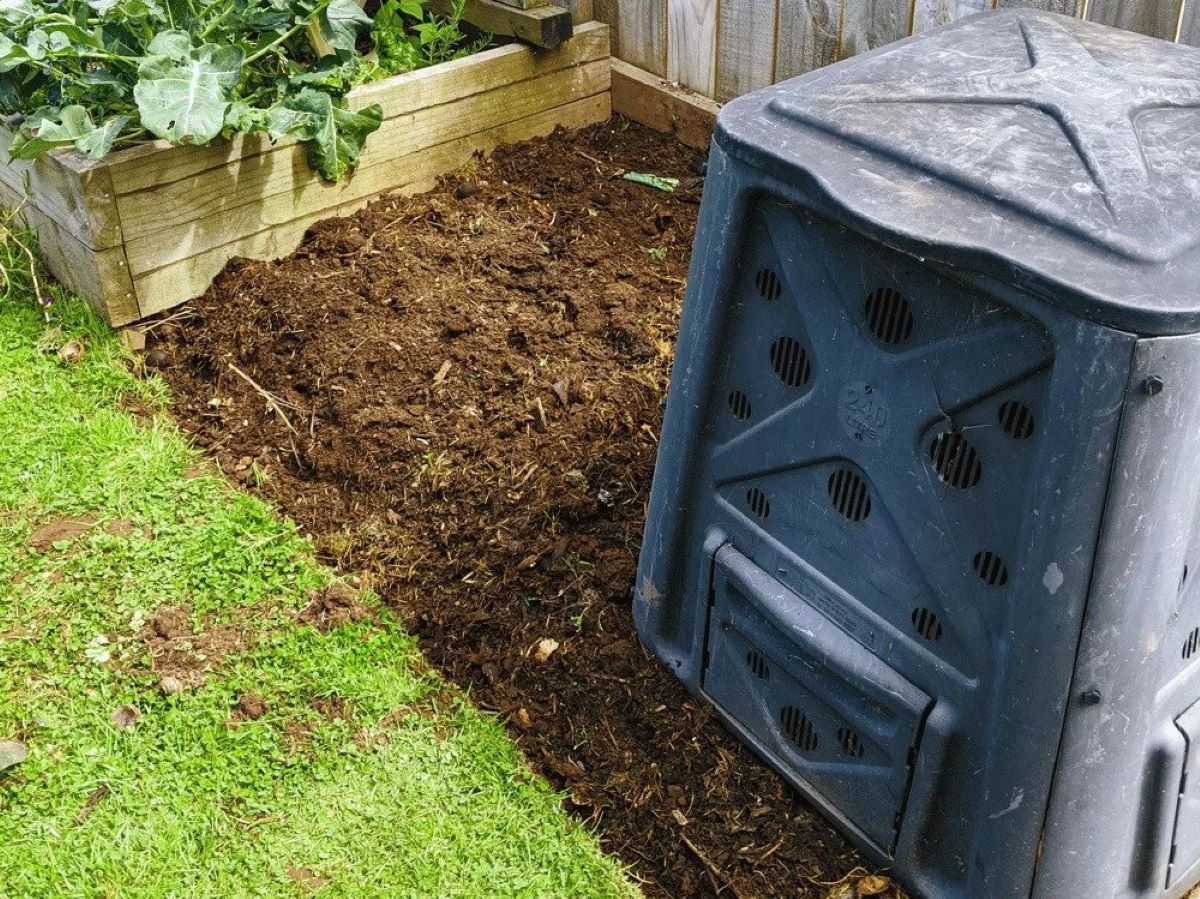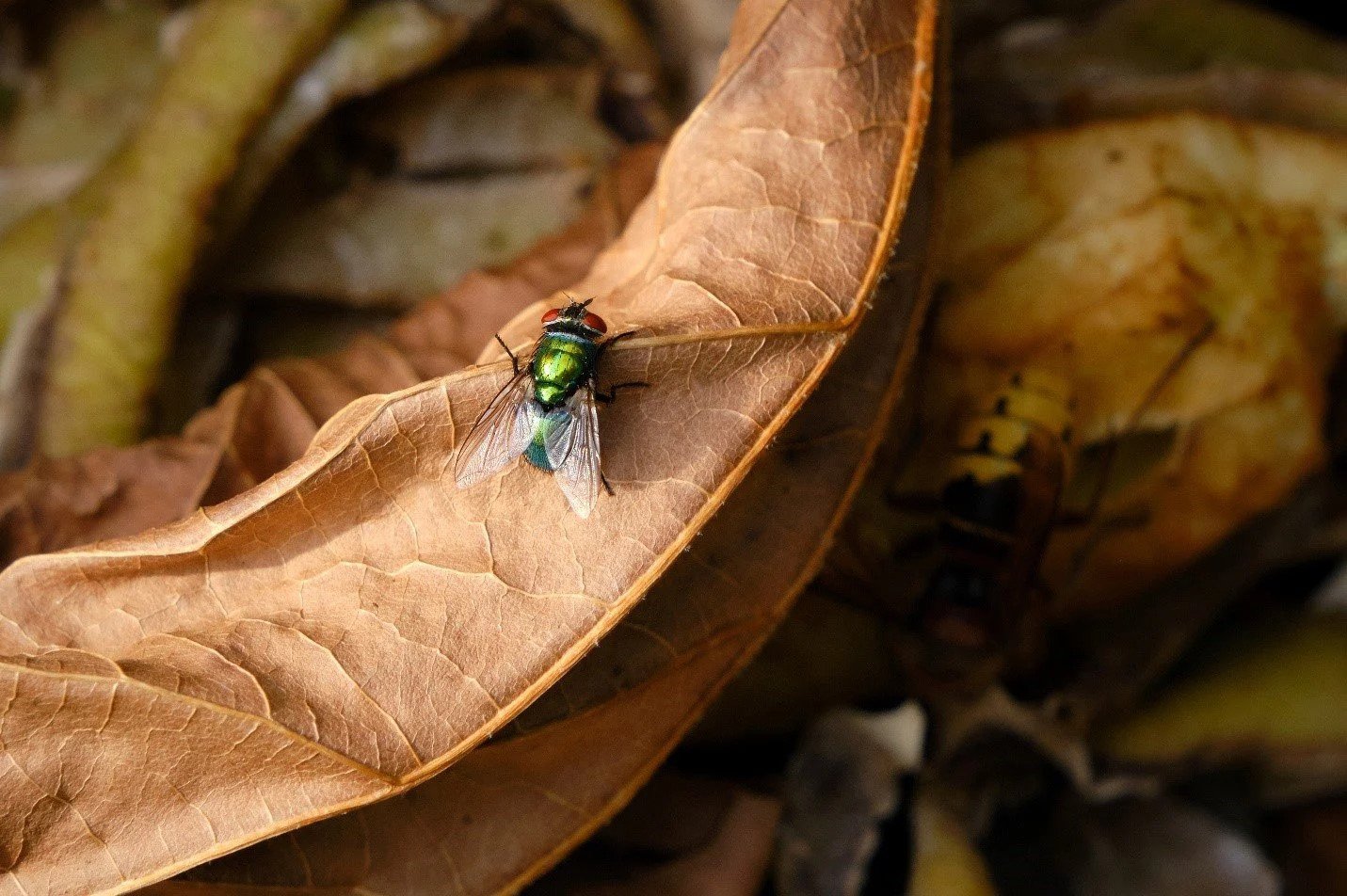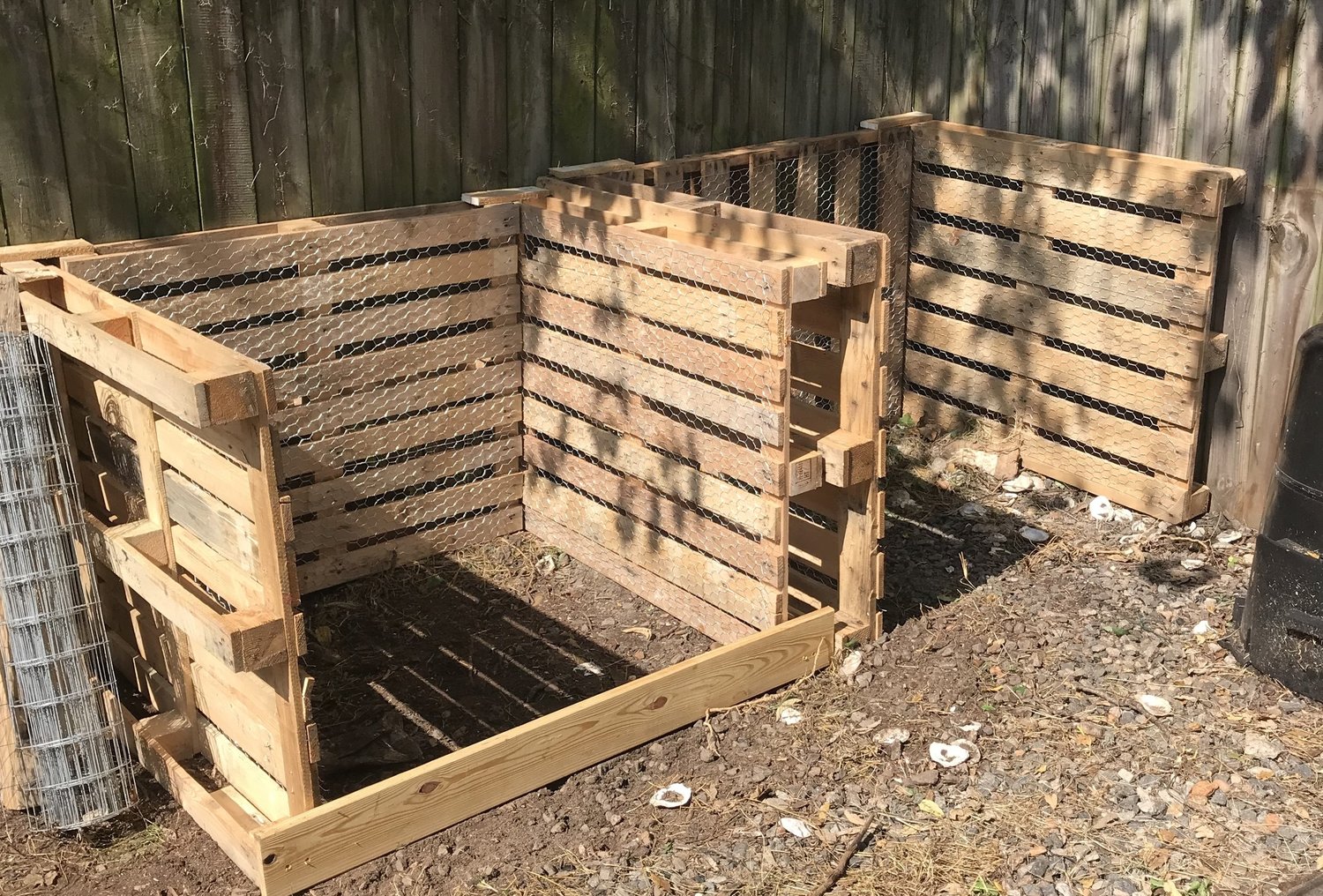Home>Gardening Tips and Tricks>Eco-Friendly Gardening>How To Start Compost Bin


Eco-Friendly Gardening
How To Start Compost Bin
Modified: January 22, 2024
Learn the steps to start an eco-friendly compost bin for your gardening needs. Discover the benefits of composting for a sustainable and greener approach to gardening.
(Many of the links in this article redirect to a specific reviewed product. Your purchase of these products through affiliate links helps to generate commission for Chicagolandgardening.com, at no extra cost. Learn more)
Table of Contents
Introduction
Welcome to the wonderful world of eco-friendly gardening! If you’re passionate about both gardening and sustainability, then starting a compost bin is a perfect way to combine these interests. Composting is a natural process that transforms organic waste into nutrient-rich soil amendment, reducing the need for chemical fertilizers and diverting waste from landfills. Not only does it benefit your garden, but it also contributes to a healthier planet.
Composting can seem overwhelming to beginners, but fear not! This comprehensive guide is here to walk you through the process step by step. Whether you have a vast backyard or just a small balcony, you can start a compost bin and make a positive impact on the environment.
In this article, we will explore the many benefits of starting a compost bin, discuss how to choose the right location, guide you in selecting the perfect compost bin design, provide tips on gathering compost materials, explain the layering technique for compost piles, and offer maintenance tips to ensure your compost bin stays healthy and productive. We will also address common issues that may arise during the composting process and provide troubleshooting tips to overcome them. Finally, we will explain how to harvest and use the nutrient-rich compost in your garden.
So, let’s dive in and learn how to start your very own compost bin, one step at a time.
Benefits of Starting a Compost Bin
Starting a compost bin brings numerous benefits, both for your garden and the environment. Here are some of the key advantages:
- Nutrient-rich soil amendment: Compost is a natural fertilizer that enriches soil with essential nutrients. It improves soil structure, promotes healthy root growth, and enhances overall plant health and productivity.
- Reduces waste: Composting diverts organic waste from landfills, reducing methane emissions and environmental pollution. By composting kitchen scraps, yard trimmings, and other organic materials, you can significantly reduce your household’s waste output.
- Environmentally friendly: Composting eliminates the need for chemical fertilizers, which can harm soil health and water quality. By using compost, you contribute to sustainable and eco-friendly gardening practices.
- Cost-effective: Composting saves money on fertilizers and soil amendments. By producing your own nutrient-rich compost, you eliminate the need to purchase expensive commercial products.
- Improves soil structure: Compost improves soil structure by enhancing its ability to retain water and nutrients, promoting a healthy and balanced ecosystem for plants, beneficial microbes, and earthworms.
- Reduces soil erosion: Healthy soil enriched with compost helps prevent soil erosion, allowing plants to establish strong root systems and reducing the risk of runoff during heavy rainfall.
- Promotes biodiversity: Compost creates a favorable environment for beneficial organisms such as earthworms, beetles, and microbes. These organisms enhance soil fertility, break down organic matter, and suppress harmful pests and diseases.
- Encourages sustainable gardening: By composting, you actively participate in sustainable gardening practices, reducing your ecological footprint and contributing to a greener future.
With all these benefits, starting a compost bin is a win-win for both your garden and the environment. It’s time to embrace this eco-friendly gardening practice and create a healthier, more sustainable world, one compost pile at a time!
Choosing the Right Location
Choosing the right location for your compost bin is crucial for its success. Here are some considerations to keep in mind:
Accessibility: Select a location that is easily accessible for regular maintenance, adding materials, and harvesting the compost. It should be convenient to reach with a hose or watering can for occasional watering.
Shade vs. Sunlight: While composting requires some warmth for microbial activity, excessive heat can dry out the pile. Choose a location that receives partial sun to provide the ideal balance of warmth and moisture. Avoid placing the compost bin in direct sunlight as it may overheat.
Drainage: Ensure that the chosen location has good drainage to prevent excess water accumulation. Avoid areas prone to flooding or where water tends to pool.
Odor Control: Composting should not produce foul odors if done correctly. However, it’s still advisable to place the compost bin away from living spaces or areas of frequent human activity to avoid any potential odor nuisance.
Proximity to Garden: Consider placing the compost bin near your garden for convenient access. This allows you to easily transport finished compost to the garden beds and feed your plants with nutrient-rich soil amendment.
Size of the Space: The size of the available space will determine the type and size of compost bin you can use. If you have limited space, consider using a compact compost tumbler or a compost bin design that suits smaller areas.
Aesthetics: If you are concerned about the appearance of the compost bin, choose a location that is discreet or can be screened with plants or fencing. This helps integrate the composting area into your garden more seamlessly.
By considering these factors, you can choose the perfect location for your compost bin, ensuring optimal conditions for the composting process and making it an easily manageable part of your gardening routine.
Selecting the Compost Bin Design
When it comes to selecting a compost bin design, there are several options to choose from. The right design will depend on your space, needs, and personal preferences. Here are some common compost bin designs to consider:
1. Traditional Bin or Pile: The traditional compost bin consists of a simple structure made of wood, wire mesh, or pallets. It allows for easy airflow and mixing of compost materials. This design works well for larger spaces and provides flexibility in terms of size.
2. Compost Tumbler: A compost tumbler is a rotating bin that makes turning the compost pile quick and effortless. It accelerates the composting process by providing frequent aeration and mixing. Compost tumblers are ideal for smaller spaces and are less likely to attract pests.
3. Worm Bin (Vermicomposting): Worm bins are perfect for those with limited outdoor space or wanting to compost indoors. Redworms (e.g., red wigglers) are added to a container filled with bedding materials and kitchen scraps. The worms eat the scraps and produce nutrient-rich castings (worm poop). Vermicomposting is a great option for apartment dwellers and can be done year-round.
4. Compost Pile: For those with larger spaces or extensive yards, a compost pile can be a cost-effective and practical option. Simply designate an open area and start layering organic materials. It is essential to turn the pile periodically to aerate and accelerate decomposition.
5. Compost Bin with Multiple Chambers: This design allows for batch composting. You can have multiple compartments or bins where you add materials at different stages of decomposition. This setup allows you to continuously add fresh materials while having finished compost readily available for use.
When selecting a compost bin design, consider factors such as available space, desired composting method (e.g., batch or continuous), ease of use, aesthetics, and budget. Remember that the key to successful composting is maintaining the right balance of moisture, aeration, and organic materials, regardless of the bin design you choose.
Take your time to evaluate different options and choose a compost bin design that fits your needs and gardening style. With the right design in place, you’ll be well on your way to creating nutrient-rich compost for your garden.
Gathering Compost Materials
When it comes to gathering compost materials, the key is to have a good balance of “greens” and “browns.” Greens refer to nitrogen-rich materials, such as kitchen scraps and fresh green vegetation, while browns are carbon-rich materials, such as dry leaves, straw, and cardboard. Here are some tips on gathering compost materials:
1. Kitchen Scraps: Collect fruit and vegetable peels, coffee grounds, tea bags, eggshells, and other non-animal food scraps. Avoid adding meat, dairy products, and oily foods, as these can attract pests and create odor issues.
2. Yard Waste: Collect grass clippings, leaves, small branches, and twigs from your yard. Shred large leaves or branches to speed up decomposition. Avoid using diseased plants or weeds with mature seeds to prevent spreading unwanted pests or invasive plants.
3. Garden Trimmings: Prune plants and gather trimmings, such as leaves, stems, and spent flowers. Chop or shred larger plant materials to facilitate the decomposition process.
4. Straw and Hay: Use straw or hay as a carbon-rich “brown” material in your compost pile. These materials help create air pockets and improve moisture retention.
5. Shredded Paper and Cardboard: Utilize shredded newspaper, cardboard, and paper products (non-glossy and without colored ink) as carbon-rich materials. Remember to dampen them before adding to the compost pile.
6. Wood Ash: Wood ash from clean, untreated wood can be added in small amounts to provide potassium and raise the pH of acidic compost. However, use ashes sparingly to avoid altering the pH too much.
7. Animal Manure: If you have access to well-aged animal manure from herbivores (e.g., cows, horses), it can be a valuable addition to your compost pile. Make sure the manure is fully composted or use it sparingly to prevent excessive nutrient levels.
8. Avoid Synthetic Materials: Do not include synthetic materials, plastics, meat, bones, or fatty/oily substances in your compost pile, as they do not break down and can contaminate the compost.
Remember to maintain a balance between greens and browns in your compost pile. Aim for a ratio of roughly 2:1 browns to greens by volume. Layer the materials as you add them to the compost bin or pile for better aeration and decomposition efficacy.
By gathering a diverse range of compost materials, you can create a nutrient-rich and well-balanced compost pile that promotes healthy plant growth and reduces waste in an eco-friendly way.
Layering the Compost Pile
Layering your compost pile is an important step in creating a healthy and well-balanced environment for decomposition. A well-layered compost pile promotes the breakdown of organic materials and ensures proper aeration. Here’s how to effectively layer your compost pile:
1. Start with a Base Layer: Begin by creating a base layer of twigs or small branches. This layer helps to improve airflow at the bottom of the pile, preventing it from becoming compacted and allowing drainage.
2. Add the “Browns” Layer: Add a layer of carbon-rich materials, or “browns,” such as dry leaves, straw, shredded cardboard, or newspaper. This layer provides aeration and helps to balance moisture levels in the compost pile.
3. Layer on the “Greens”: Add a layer of nitrogen-rich materials, or “greens,” such as kitchen scraps, grass clippings, or fresh green vegetation. This layer provides essential nutrients for composting microbes and speeds up the decomposition process.
4. Alternate Layers: Continue layering the pile with alternating layers of browns and greens. Aim for a ratio of approximately 2 parts browns to 1 part greens. Adding thin layers of each material helps to ensure a good mix and even distribution of nutrients.
5. Moisten Each Layer: As you add each layer, lightly moisten it with water. The materials should be damp, but not soaking wet. This moisture creates an ideal environment for microbial activity and decomposition.
6. Repeat the Layering: Continue repeating the layering process until you have used all your compost materials or reached the desired height for your compost pile. Remember to finish with a layer of browns to help prevent odors and retain moisture.
7. Cover the Pile: Once the compost pile is layered, cover it with a tarp or compost bin cover. This helps retain heat and moisture within the pile, accelerating decomposition. Optimal decomposition occurs at temperatures between 135°F and 160°F (57°C and 71°C).
8. Turn the Pile: Every few weeks, use a garden fork or compost turner to aerate the pile by turning it. This helps mix the materials, introduces oxygen, and encourages even decomposition. Turning the pile also helps to prevent any potential odor or pest problems.
Remember to monitor the moisture level of your compost pile. It should be damp, like a wrung-out sponge. If the pile becomes too dry, water it slightly, and if it becomes too wet, add more dry browns to absorb excess moisture.
By layering your compost pile properly, you create an optimal environment for decomposition and allow the beneficial microorganisms to thrive. This results in nutrient-rich compost that will enhance the health and vitality of your garden plants.
Maintaining the Compost Bin
Maintaining your compost bin is essential to ensure a successful composting process. By following a few simple tips, you can maintain a healthy and productive compost bin. Here’s how:
1. Proper Moisture: Monitor the moisture level of your compost bin regularly. The ideal moisture content is similar to a damp sponge. If your compost pile is too dry, add water; if it is too wet, add a layer of dry browns to absorb excess moisture.
2. Aeration: Regularly aerate your compost bin by turning or mixing the materials. Aeration helps to introduce oxygen, prevent the pile from compacting, and promote decomposition. Turning the compost once a week is generally sufficient, but adjust the frequency based on the specific needs of your compost bin.
3. Balancing Greens and Browns: Ensure a balance between nitrogen-rich “greens” (such as kitchen scraps and green vegetation) and carbon-rich “browns” (such as dry leaves and shredded cardboard). Strive for a ratio of approximately 2 parts browns to 1 part greens. Adjust the ratio as needed to maintain a healthy composting process.
4. Monitor Temperature: Regularly check the temperature of your compost pile. It should ideally range between 135°F and 160°F (57°C and 71°C) for efficient decomposition. Fluctuations in temperature are normal, but if the pile consistently falls below 110°F (43°C), it may indicate a lack of microbial activity. Add more greens or turn the pile to reactivate the decomposition process.
5. Control Pests and Odors: To prevent pests and odors, avoid adding meat, dairy, and oily foods to your compost bin. Covering kitchen scraps with a layer of browns helps control odors and discourages pests. If pests become an issue, consider using a compost bin with a secure lid or use wire mesh to prevent access.
6. Greens Maintenance: Kitchen scraps and other “greens” can attract flies or emit odors if left exposed on top of the compost pile. To avoid this, bury the greens within the pile or covered them with a layer of browns. This will help maintain a more balanced and odor-free compost bin.
7. Patience: Composting is a natural process that takes time. Depending on the compost bin design and the materials used, it can take anywhere from a few months to a year for compost to mature. Be patient and allow nature to work its magic.
8. Regular Monitoring: Regularly monitor the progress of your compost bin. Check for signs of decomposition, such as a dark, crumbly material forming at the bottom of the pile. Adjust the moisture level, turn the pile, and add fresh materials as needed to maintain a healthy composting environment.
By following these maintenance tips, you can ensure that your compost bin remains productive and provides you with nutrient-rich compost to enhance your garden’s health and vitality.
Troubleshooting Common Issues
While composting is a straightforward process, occasionally, you may encounter some common issues. Here are a few troubleshooting tips to help you overcome these challenges:
1. Slow Decomposition: If your compost pile is not decomposing as quickly as expected, consider adding more nitrogen-rich “greens” to increase the microbial activity. Ensure the pile is adequately moist and turn it more frequently to introduce oxygen and promote decomposition.
2. Foul Odors: Foul odors indicate that the compost pile lacks proper aeration or has an excess of moisture. Mix in more “browns” to improve aeration and absorb excess moisture. Avoid adding meat, dairy, or oily materials as they can cause unpleasant smells. Turning the pile regularly will also help prevent odor issues.
3. Pests: If pests such as flies or rodents become a problem, make sure you are covering kitchen scraps with a layer of browns to discourage pests. Consider using a compost bin with a secure lid or adding wire mesh around the pile to prevent access. Avoid adding meat, dairy, or oily foods that can attract pests.
4. Excessive Moisture: If your compost pile is overly wet, add more dry carbon-rich “browns” to absorb moisture and improve aeration. Turning the pile will also help distribute moisture more evenly. Ensure that your compost bin has proper drainage and is not located in an area prone to pooling water.
5. Unpleasant Smells: Unpleasant smells can indicate that the pile is lacking oxygen and has become anaerobic. To rectify this, turn the pile more frequently and add more “browns” to improve aeration. Check for any pockets of compacted material and break them apart.
6. Excessive Heat: If your compost pile becomes excessively hot, it may indicate too many nitrogen-rich “greens.” Add more carbon-rich “browns” to balance the ratio and cool down the pile. Turning the pile can also help regulate temperature by introducing more oxygen.
7. Weed Seeds and Plant Diseases: If your compost pile does not reach a high enough temperature to kill weed seeds or plant diseases, avoid adding these materials to the pile. It is best to dispose of weeds or diseased plants separately or in a hot composting system to ensure their complete elimination.
8. Insufficient Space: If your compost bin is too small and struggles to accommodate all the materials, consider upgrading to a larger bin or creating multiple compost piles. This will allow for better airflow and decomposition.
Remember, troubleshooting is a normal part of the composting process. By making adjustments and implementing these tips, you can overcome common issues and continue producing high-quality compost for your garden.
Harvesting and Using Compost
Harvesting and using compost is the ultimate reward for your composting efforts. When the compost has fully decomposed and transformed into dark, crumbly, and earthy-smelling material, it is ready to be used in your garden. Here’s how to harvest and make the most of your compost:
1. Harvesting: To harvest the compost, stop adding new materials to the compost bin for a few weeks, allowing the remaining organic matter to finish decomposing. The compost is ready when it resembles a dark, uniform material with no recognizable original materials.
2. Screening: To remove any large debris or remaining chunks, pass the compost through a screen or mesh. This will ensure a finer, more consistent product that is easier to handle and spread.
3. Application: Apply the finished compost in the garden by spreading a layer of it around your plants, mixing it into the soil, or top-dressing existing beds. Compost can also be used as an ingredient when potting plants or starting seedlings.
4. Soil Amendment: Incorporate the compost into your garden soil before planting or during the growing season. It improves soil structure, enhances water retention, and provides essential nutrients for plant growth.
5. Mulching: Use compost as a mulch by applying a layer around plants, shrubs, or trees. This helps control weeds, regulate soil temperature, and conserve moisture. Make sure to leave some space between the compost and the stem or trunk to prevent rot and promote airflow.
6. Compost Tea: Steep a handful of compost in a bucket of water to create compost tea. This nutrient-rich liquid can be used as a foliar spray or soil drench to provide an instant boost of nutrients to your plants.
7. Storage: If you have excess compost, store it in a dry, covered container or bin until you are ready to use it. This will help preserve its quality and prevent it from becoming overly moist or drying out.
8. Continuous Composting: After harvesting the finished compost, you can start a new pile or continue adding organic materials to the existing compost bin. Maintain the ideal balance of greens and browns, regularly turn the pile, and monitor moisture levels to ensure a continuous supply of nutrient-rich compost.
Remember, compost is a valuable resource for your garden. By using it, you not only nourish your plants but also contribute to sustainable gardening practices and reduce waste.
So, roll up your sleeves, harvest that beautiful compost, and watch your garden thrive with the benefits of your eco-friendly composting efforts!
Conclusion
Congratulations on your journey into eco-friendly gardening by starting a compost bin! By embracing this sustainable practice, you have taken a significant step towards reducing waste, improving soil health, and creating a healthier environment for your plants and the planet.
In this comprehensive guide, we explored the benefits of starting a compost bin, discussed how to choose the right location, select the perfect compost bin design, gather compost materials, layer the compost pile, and maintain the bin. We also provided troubleshooting tips and guidance on harvesting and using the nutrient-rich compost in your garden.
Composting is a process that requires patience, attention, and a little trial and error. Don’t be discouraged if you encounter challenges along the way—learning from these experiences is part of the composting journey. With each new batch of compost, you’ll gain valuable insights and refine your composting skills.
Remember to keep the compost pile well-balanced, maintaining the right ratio of greens to browns, monitoring moisture levels, and providing proper aeration. Turning the compost regularly and addressing any issues that may arise will ensure successful decomposition and the creation of nutrient-rich compost for your garden.
As you embrace the art of composting, you’re not only enriching your garden but also playing an active role in sustainable living. Every bucket of kitchen scraps and pile of garden clippings diverted from the landfill makes a positive impact on the environment.
So, continue to nurture your compost bin, observe the transformations happening within, and use the precious compost to cultivate a flourishing garden. Enjoy the bountiful harvests, vibrant blooms, and thriving plants—all thanks to your commitment to eco-friendly gardening.
Keep composting and inspiring others to do the same. Together, we can create a greener future, one compost pile at a time!









